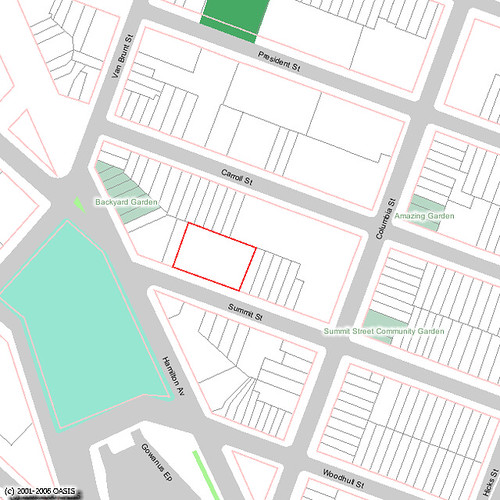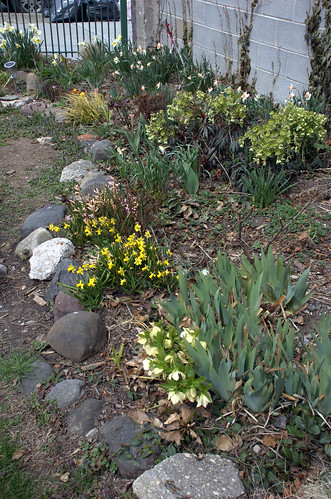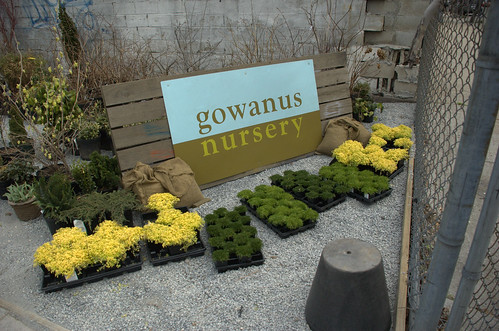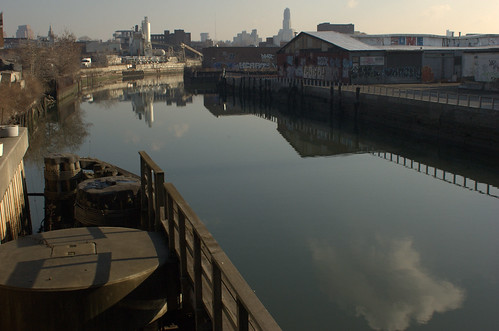Governor’s Island, Detail, 1911 New York Dock Dock Company Lithograph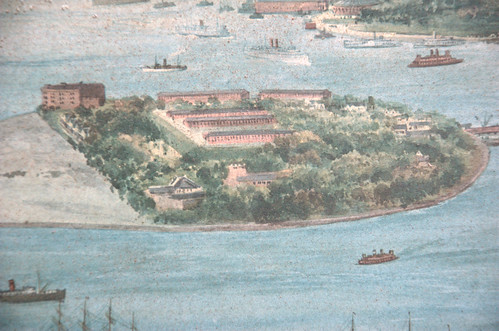
When we bought our house about three years ago, one of the attractions was “old house romance.” The previous owner believed the house had been in her family since it was built in 1900. I’ve written previously about finding a 1911 lithograph of the New York Dock Company in the basement. Earlier this week, Peter Miller, the new owner of Freebird books in Columbia Waterfront/Red Hook, contacted me by email asking for permission to use one of my photos of it:
Anyone living in the neighborhood, particularly Red Hook, will be familiar with the New York Dock Company’s remnants–hulking gray warehouses that must make Dumbo-drooling Corcoran agents weak in the knees. Seldom however do we get a chance to see a bird’s eye view of their domain, which once sprawled over two and a half miles of waterfront. The lithograph provides a rare peek at the commerce that transpired along the banks of Governors Island and Brooklyn.
– December 28, 2007, Peter Miller, Freebird Books
Miller goes on to write more about the history of Governor’s Island, and how it was nearly lost to infrastructure development.
In 1898 (the year Brooklyn became a borough of New York City), an assemblyman proposed using the island as a center span anchor for a bridge between Red Hook and the Battery. Proof that real estate value has never been far from New York’s beating heart, the assemblyman argued that the bridge “would cause a phenomenal development in South Brooklyn.”
That cheap promise would be reprised forty years later when Robert Moses demanded the very same public works project–but on a far grander scale. Given wide-ranging powers by La Guardia in 1938, Moses tried to reallocate the money meant for a tunnel to build a monumental (in all senses of the word) bridge that would hopscotch across Governors Island.
Today we have this view from Valentino Pier of both Governor’s Island and Downtown Manhattan.
This view was saved, in part, by opposition from community leaders in both Manhattan and Brooklyn, and, in part, by none other than Eleanor Roosevelt:
Moses’s threats and ultimatums cowed city and state officials into submission. All he needed was the federal government’s rubber stamp. But, unforeseen, Eleanor Roosevelt publicly questioned the bridge’s impact: “Isn’t there room for some consideration of the preservation of the few beautiful spots that still remain to us on an overcrowded island?” The bridge’s opponents had infiltrated the White House. FDR allowed the War Department to kill the project and favor a tunnel out of national security concerns (but more likely out of spite).
Related Posts
1911 New York Dock Company Lithograph
Links
Freebird Books, 123 Columbia Street (GMAP), Brooklyn, New York 11231

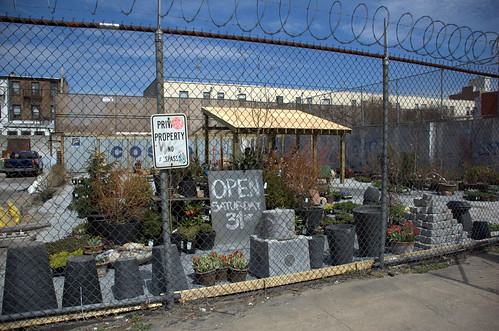


 1 & 2 Family Residential
1 & 2 Family Residential Multi-family Residential (3 or more Residential Units)
Multi-family Residential (3 or more Residential Units) Mixed Use (Residential and Commercial)
Mixed Use (Residential and Commercial) Commercial
Commercial Institutions
Institutions Transportation & Parking
Transportation & Parking Industrial (corresponds to Zoning’s “Manufacturing” designation)
Industrial (corresponds to Zoning’s “Manufacturing” designation) Vacant Lots
Vacant Lots